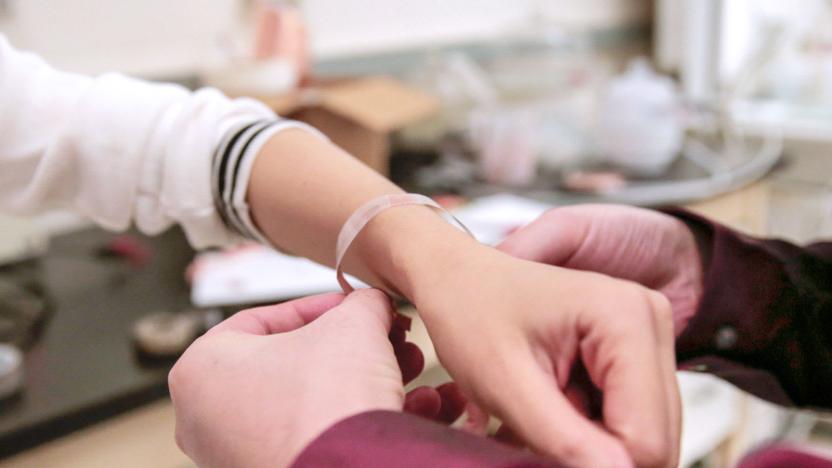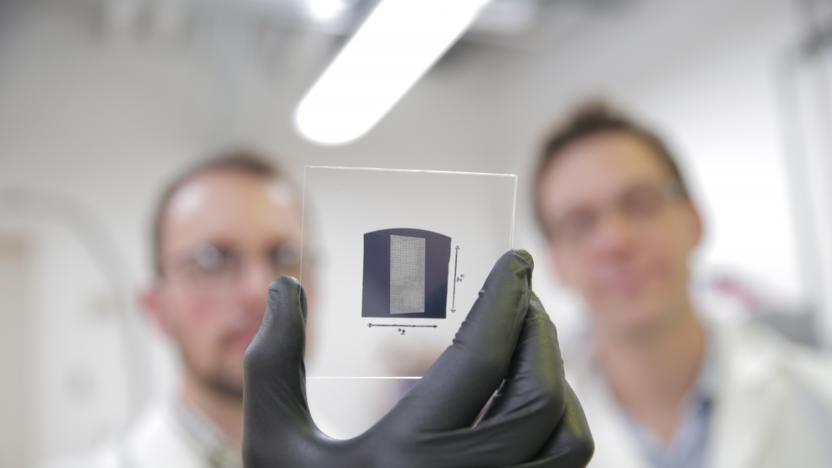UniversityOfWisconsin-madison
Latest

Self-powered electric bandages could speed up healing
Scientists have known for a long time that electricity can speed up healing for skin wounds, but the necessary power has usually tied patients to electrotherapy machines. In the future, though, it might not be much more complicated than treating a wound the old-fashioned way. Researchers in the US and China recently developed self-powered electric bandages that promise to be as easy to wear as ordinary dressings. The dressings include tiny electrodes powered by nanogenerators wrapped around your torso. All you have to do is breathe -- the movement of your ribcage activates the nanogenerators, sending low-intensity pulses to the wound area.

Six energy-harvesting gadgets powered by people
By Cat DiStasio People power is perhaps one of the world's greatest untapped sources of renewable energy. Smart devices that harness kinetic energy from everyday human activities help the environment in more ways than one. By turning motion into useable electricity, human-powered gadgets help reduce reliance on fossil fuels and batteries that damage the planet. At the same time, kinetic gadgets encourage people to keep moving, thereby supporting a healthier lifestyle. From a dance floor that turns your sweet moves into a luminous display to a clever motion-powered light that keeps runners safe at night, we've rounded up six amazing gadgets that take advantage of human movement.

Carbon nanotube transistors promise faster, leaner processors
The computing industry sees carbon nanotube transistors as something of a Holy Grail. They promise not just faster performance and lower power consumption than silicon, but a way to prevent the stagnation of processor technology and the death of Moore's Law. However, their real-world speed has always lagged behind conventional technology... until now, that is. University of Wisconsin-Madison researchers have created what they say are the first carbon nanotube transistors to outpace modern silicon.

Scientists design fast, flexible transistor for wearables
A team of University of Wisconsin-Madison researchers have devised a cheap method to make impressively fast and flexible silicon-based transistors. Their technique involves using beams of electrons to create reusable molds of the patterns they want, as well as a very, very tiny knife to etch minuscule trenches into those patterns. The result is a small, bendy transistor -- though not as small as a the Navy's single-molecule design -- that can transmit data wirelessly and has the potential to operate at a whopping 110 gigahertz. In other words, it's capable of some extremely fast computing and could lead to wearables a lot more powerful than those available today.

UW-Madison researchers invent a metal-free fuel cell
The development of fuel cell technology has been hamstrung by the need for expensive and difficult-to-manufacture catalysts like platinum, rhodium or palladium. But a team of researchers from the University of Wisconsin-Madison believe they've found an ingenious alternative that employs a molecular, rather than solid, catalyst.

3D-printed music scores help the blind feel every note
It's increasingly apparent that schools can do exceptional things when you give them 3D printers. Need proof? The University of Wisconsin's Mechanical Engineering department is using its advanced selective laser sintering printer to make a wide range of intricate projects, including 3D music scores for the blind. The creation replaces Braille (which sometimes omits crucial details in music) with extruded versions of the same notes you see on regular sheets -- you can interpret those arpeggios in the same way as any other performer, rather than learn a separate system. The university is still refining the concept, so it may take a while before blind virtuosos are using 3D sheets in concerts. You'd need an easy way to mass-produce them, for one thing. If the technology pans out, though, it could open doors for vision-impaired artists. [Image credit: Scott Gordon]

Piezoelectric system turns your balmy breath into pungent power
Researchers at the University of Wisconsin-Madison have come up with a way to produce electricity from just about the most renewable source known to man -- his own breath. It's all thanks to a plastic microbelt developed by engineers Xudong Wang, Chengliang Sun and Jian Shi. Made of a material known as polyvinylidene fluoride (PVDF), this belt produces an electric charge whenever low-speed airflow passes over it and causes it to vibrate -- a result of that vaunted piezoelectric effect. Eventually, Wang and his team were able to tinker with their system to the point where it could produce enough current to charge small electronic devices. "The airflow of normal human respiration is typically below about two meters per second," Wang explained. "We calculated that if we could make this material thin enough, small vibrations could produce a microwatt of electrical energy that could be useful for sensors or other devices implanted in the face." The researchers say their technology could be used to power smaller biomedical devices like blood monitors and pacemaker batteries, which typically don't demand vast amounts of energy. No word yet on when this system could make its way to the mainstream, but we'll be waiting with bated breath.

Spiroscout inhaler uses GPS, WiFi to track asthma attacks
Back in 2009, we told you about a University of Wisconsin-Madison scientist using GPS to tag asthmatics in an effort to better understand what was triggering their attacks. Two years later, David Van Sickle and his current company, Asthmapolis, are about ready to turn his research into a commercial product dubbed the Spiroscout. The USB-powered inhaler uses GPS as well as WiFI to track patients' inhaler use, which Van Sickle says will yield a fuller, more accurate body of data than the self-recorded logs patients are often asked to keep. The benefit is two-fold, Van Sickle says: physicians can use this data to adjust their patients' medication, if necessary, while epidemiologists might have more insight into population-level trends. As PhysOrg notes, this isn't the first inhaler of its kind (incidentally, that would be Asthmapolis' first-gen product, the SiliconSky GPS), but it may be the most practical one to date in that it doesn't come with a bulky box attached. Spiroscout isn't available just yet -- the company expects it to ship in the fall -- but curious asthmatics can reserve theirs now.

Researchers create human-like "shape-shifting" lens
Researchers at the University of Wisconsin-Madison have gone back to the source for inspiration with their new artificial lens, creating a so-called "shape-shifting" lens that mimics the way a human eye works. Like other liquid lenses, theirs uses a glass-oil-water interface, but it also adds a a ring of polymer gel around the lens that acts like a muscle, changing the focal length as it expands and contracts. What's more, the gel apparently works simply by reacting to environmental changes, like a rise in temperature or change in acidity, allowing for both smaller and more power-efficient imaging devices than other similar lenses. One example the researchers give is an implantable lens that could react to protein changes in the human body. Not quite Fantastic Voyage territory, but we'll take what we can get.






